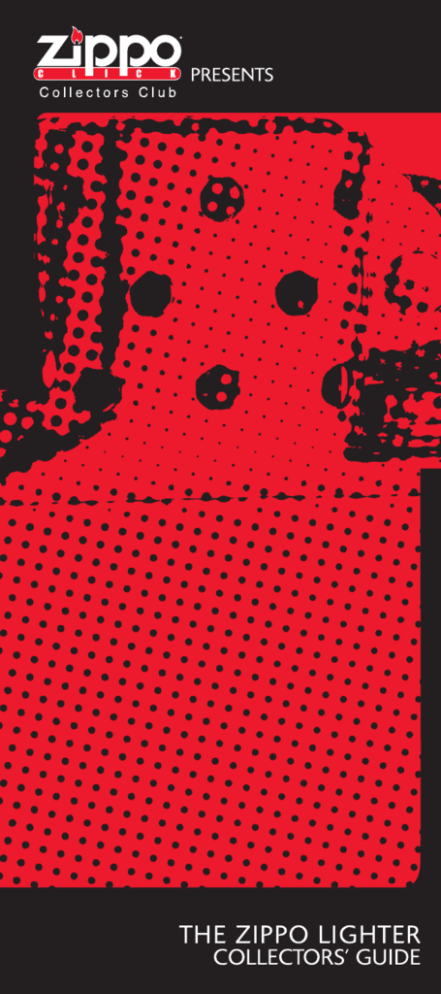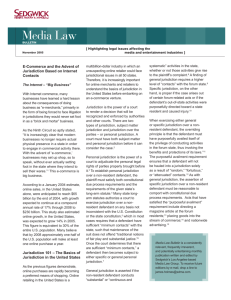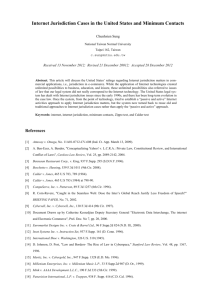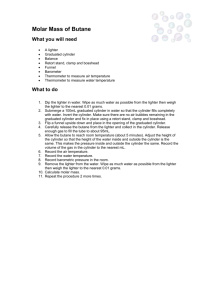Zippo Lighter Collector's Guide: History, Dating, Value
advertisement

Dear Zippo Lighter Enthusiast, One night in 1933 above a garage in Bradford, Pennsylvania, George G. Blaisdell pushed the first insert into the first case of Gregory W. Booth what would be the first Zippo lighter. That President and CEO was more than 400 million Zippo lighters ago. Mr. Blaisdell would be amazed to know that today thousands of Zippo lighter collectors all over the world communicate through collectors’ clubs, newsletters, e-mail and web pages, and get together at shows, conventions, and the biennial Zippo/Case International Swap Meet. Zippo introduced its own lighter collectors’ club, Zippo Click, in 2002, logging over 8000 members in the first three years. Zippo Click provides an opportunity for serious and casual collectors alike to share their interest in Zippo lighters. For many, collecting Zippo lighters has become a hobby, and for some, it has even become a business. In light of the ever-growing international interest in the Zippo windproof lighter, we are pleased to present this guide as an introduction to the novice lighter collector. This is a place to start. It is not meant to be a complete guide to Zippo lighter identification or collecting. Let this also be a word of caution. The collectibles market is extremely volatile and any given piece is worth only whatever someone else wants to pay to begin or complete a collection. Collecting Zippo lighters is about fun, about history, about people. Zippo Manufacturing Company makes no claim as to how much a single lighter, however old or in whatever condition, is worth. Several books have been published about Zippo lighters and lighter collecting. For a current list, visit zippo.com. For the latest information about Zippo lighter collecting, visit zippoclick.com. Sincerely, Gregory W. Booth President and CEO Zippo Manufacturing Company 1 SPARK YOUR INTEREST Since its opening in 1997, the Zippo/Case Visitors Center has attracted well over a million visitors from more than 120 countries. The 15,000 square-foot center houses northern Pennsylvania’s most visited museum, the world famous Zippo Repair Clinic, and a retail store containing the most complete line of Zippo and Case products in the world. Like Zippo, W. R. Case & Sons Cutlery, a subsidiary of Zippo since 1993, produces a legendary product, which has become one of the most collectible items in the world. The Zippo/Case Visitors Center is located at 1932 Zippo Drive in Bradford, PA, just off the U.S. route 219 expressway. Call the visitors’ information line at (888) GGB-1932, or visit zippo.com for information. When it’s not on tour, visitors can see the Zippo Car, an American icon on wheels, at the Zippo/Case Visitors Center. The current Zippo Car, a replica of the 1947 original, was made in 1997 to commemorate the 50th anniversary of the Zippo product mobile. Visit zippo.com to read more about the mysterious disappearance of the original Zippo Car, and track the current Zippo Car in its travels across the country. 2 HOW TO “READ” Style, Condition, Age Style can signify the model, identifying it as a pocket lighter regular or slim - or a table lighter, like the Barcroft or the Lady Bradford. Style can also refer to the decorative elements that distinguish lighters or groups of lighters. For example, does it have diagonal cuts or is it 1/4” taller than the current models, marks of some early Zippo lighters? Does it wear a metallique? Is it a Town & Country? This book will help you determine that. What does condition mean? Condition means everything in lighter collecting (with the possible exception of sentiment.) To some collectors, it means that the lighter is as pristine as the day it was made. Never lit means “mint” to some aficionados. But here’s a rule of thumb: “Mint” generally means that the lighter is in superb condition. The chrome is in top shape. The lighter has all original parts. It has never been repaired. If painted or enameled, the colors are not chipped or scratched. The cam spring is strong. It opens with that distinctive Zippo lighter FYI: There are many Zippo “click” and closes with that look alikes! As interest in solid, reassuring “thunk”. collecting Zippo lighters has Many collectors use a rating increased, so has the scale from “Mint” to manufacture of counterfeit “Excellent” to “Fine” to Zippo-style lighters. Zippo is “Good” to “Fair” to “Poor”, taking aggressive measures to depending on these variables confront this problem. of condition. And finally, does the Zippo windproof In 2002, Zippo lighter still have its original Manufacturing Company packaging? Original boxes, was granted trademark labels, and printed inserts protection for the shape of add considerably to the the world famous Zippo collectibility of the lighter. windproof lighter. Many counterfeit lighters look very much like the real thing. This is especially true of lighters depicting the designs and sentiments of the Vietnam War era. 3 YOUR ZIPPO LIGHTER: Determining the date of a Zippo lighter is fun and easy. Because Zippo founder George G. Blaisdell offered a lifetime guarantee, the bottom of each Zippo lighter made since the mid-1950s was encoded with a series of markings so he could identify which run of lighters was being returned for repairs. What began as a qualitycontrol tool for Mr. Blaisdell has become a collector’s dream and a way to precisely date most Zippo lighters. Over the years, the date code format has been modified, most recently in 2001. We’ve included a key to the code on the next pages. Zippo Myths — Bottom Stamp Myth - The codes on the bottom indicate the quality of the lighter. Some individuals believe that an "A" lighter is better than an "H" lighter. For date codes including Roman numerals, the higher the Roman numeral, the higher the quality. Fact - The codes on the bottom stamp are date codes indicating when the lighter was manufactured. Myth - Lighters are manufactured by prisoners. The Roman Numerals at the bottom of the lighter indicate the length of prison sentence. Myth - Lighters are manufactured by prisoners. The letters on the bottom stamp indicate their crime "R" for Rape, "M" for murder, etc. Fact - Lighters are manufactured in Bradford, PA by employees who are paid for their service to the company. 4 BOTTOM STAMP As with most collectibles, the date of manufacture of a Zippo lighter often affects its value. Valuable information on the bottom of every Zippo lighter can help you determine its date of manufacture. Most lighters fabricated between 1933 and 1957 can be identified by style and model and the patent or patent-pending marks. Starting in the mid 50s, date codes were stamped on the bottom. The original purpose was for quality control. The date codes have since become an invaluable tool for Zippo collectors. (1933 - 1954) (1955 - 1979) ® (1980 - 2010) The appearance of the word “Zippo” in the bottom stamp provides another clue to dating. There have been three major changes, as shown in inset. From 1933 to the mid 50s the word Zippo was stamped in block letters. The Zippo script logo was developed in the late 40s and was phased-in on the lighter bottom stamp around 1955. In the late 70s the logo was redesigned. It was incorporated into the bottom stamp in 1980. Slim Lighter Identification Codes Slim lighters were first introduced in 1956, with a flat bottom and no date code. The first markings were added in 1957 and overlapped into 1958. From 1957-1965 the code configuration on the slim lighters differed from the regular lighters. From 1966 on, the configuration has been the same. 1957 1958 1959 1960 •••• •••• •••• ••• ••• •••• •••• ••• ••• •• 1961 1962 1963 1964 1965 •• •• • • •• • • Regular Lighter Identification Codes 1933 1937 - c.1950 1942 - 1946 c.1950 - c.1957 c.1950 - c.1957 Patent Pending Patent 2032695 Black Crackle, Patent 203695. (This number was stamped in error, should have been Patent 2032695) Patent 2517191 Patent 2517191with patent pending Zippo records indicate an overlap of bottom stamp configurations from 1949-1957. Also, some lighters produced between 1955-57 were date coded; however, specifics remain unclear. 5 DATE CODES Regular Lighter Identification Codes 1958 Patent Pending •••• •••• 1959 • • • • • • • 1960 • • • ••• 1961 • • • •• 1962 •• •• 1963 •• • 1964 • • 1965 • 1966 I I I I IIII 1967 I I I I III 1968 I I I III 1969 I I I II 1970 II II 1971 II I 1972 I I 1973 I 1974 / / / / / / / / 1975 / / / / /// 1976 / / / /// 1977 / / / // 1978 // // 1979 / // // / 1980 / / 1981 / 1982 \ \ \ \ \ \ \ \ 1983 \ \ \ \ \\\ 1984 1985 1986 1986 1987 1988 1989 1990 1991 1992 1993 1994 1995 1996 1997 1998 1999 2000 2001 2002 2003 2004 2005 2006 2007 2008 2009 2010 \\\ \\\ \\ G to L A to L A to L A to L A to L A to L A to L A to L A to L A to L A to L A to L A to L A to L A to L A to L A to L A to L A to L A to L A to L A to L A to L A to L A to L \\\ \\ \\ II III IV V VI VII VIII IX X XI XII XIII XIV XV XVI 01 02 03 04 05 06 07 08 09 10 In 1979 an error was made in the date code. One of the slash marks was removed from the left of the Zippo trademark instead of being removed from the right; thus the code read: / //. This date code error was corrected within the same year to read: // / Effective July 1, 1986 the dot and slash system was replaced by year / month code. Year is noted with Roman numeral; letter designates month (A=January, B=February, etc.) Beginning in 2001, the Roman numerals indicating the year were replaced with numbers corresponding to the last digits of the year of manufacture. For more collecting information, consult one of several books about Zippo lighters or visit zippoclick.com. 6 COLLECTIBLE OF 1992 – The first Collectible of the Year commemorated Zippo’s 60th Anniversary with a pewter emblem on Midnight Chrome. 1993 – Windy. The classic 1930s Varga Girl look recalled Zippo’s first national advertisement in 1937. 1994 – The D-Day Commemorative saluted the 50th anniversary of “the longest day” with a black crackle surface and antique brass emblem patterned after the sleeve patch worn by the Allied troops. Companion set: four-lighter Allied Heroes. 1995 – Mysteries of the Forest™ introduced a new Technigraphics™ imprinting process. The four lighters, when put together, make up a large canvas, a kind of puzzle. Companion lighter: Jaguar and Cub at Turtle Falls. 1996 – Zippo Salutes Pinup Girls. These pinup girls are reminiscent of Zippo’s early national advertisements. Single lighter is Joan, Pinup of the Year; companion set is the Four Seasons. 1997 – Zippo’s 65th Anniversary commemorative lighter featured an antique pewter emblem in the artdeco style, recalling the era of Zippo’s founding. 7 THE YEAR 1998 – The 1998 collectible celebrated the re-creation of the 1947 Zippo Car, with an antiqued pewter emblem on a classic brushed chrome finish. Set includes a companion Zippo license plate key tag. 1999 - The 1999 Millennium Edition heralded the dawn of the new millennium. One World, One Future represented two Zippo firsts: the use of TVD titanium coating and also the first use of computer engraving on a Collectible of the Year. 2000 – Keeper of the Flame honored one of the most magical and essential elements known to man . . . fire. Prehistoric man discovered fire, but Zippo has perfected it. 2001 - Hollywood is a familiar place for the Zippo lighter, with more than 1200 supporting roles to its credit. Hollywood’s Leading Light saluted Zippo with its own Hollywood star on a new gold dust finish. 2002 – The eleventh (and final) Collectible of the Year, Friends For a Lifetime commemorated Zippo’s 70th Anniversary. Carried to work, to important events, even into battle, Zippo lighters are part of our lives and our history. Every Zippo lighter has a story funny, poignant, even heroic - whenever or wherever a Zippo lighter clicks open, a conversation starts. Some of those stories are recorded in the booklet that accompanied this collectible. 8 TOWN AND COUNTRY Town & Country may be the most luminous and one of the most desirable collectors’ series in the history of the company. First offered in 1949, Town & Country employed a “paint-on-paint” process to achieve its rich texture. The colors were airbrushed on the lighter one at a time, after the surface was engraved at .004 inch deep. The classic series was illustrated with eight icons: the mallard, the pheasant, the geese, the trout, the horse, the English setter, the lily pond and the sloop or sailboat. Individual clients and organizations used this engraved and paint-on-paint process for their logos and military or fraternal insignias. In its first year, a Town & Country was a moderately expensive gift at $7.50. The 1969 moon landing lighter was the last Town & Country lighter ever produced. 9 FYI: Mint Town & Country lighters are extremely desirable for collectors, not only because they are among the most beautiful lighters in the world, but also because they are rare. Many people carried their lighters along with coins and keys in pockets and purses and, as a result, few Town & Country lighters, despite their electrobaked finish, have survived the subsequent decades without some chipping or scratching. METALLIQUES Metalliques are metal lace, handcrafted slices of chrome-plated brass, razorthin at five one-thousandths of an inch. Metallique production peaked in the late 1930s. From the mid 1930s to the early 1940s, customers could send in any lighter and have any available metallique – including metallique initials – applied to their lighters, thus making exact dating of some metalliques difficult. Some of the most famous and familiar metalliques include Kendall Oil, the two views of the Reveler, the Scotty dog, and the 1939 World’s Fair. An attempt to reintroduce Zippo lighters with the distinctive look of the metallique as a part of our 65th Anniversary celebration was unsuccessful. Zippo Myths — LEATHER WRAPPED LIGHTERS Myth - The lighter was wrapped in leather during war time so that the familiar "click" would not be heard in combat and soldiers would remain undetected. Fact - Zippo did manufacture lighters with a leather wrap. It was a way to give a new look to our product. 10 TABLE LIGHTERS Barcroft Zippo’s first table lighter, the #10 Tall Table Lighter, was produced in limited quantities between 1938 and 1941, and sold at retail for $7.50. Measuring 4.5 inches in height, the #10 had an inside unit with greater than four times the fuel capacity of a conventional Zippo windproof pocket lighter. A slightly shorter #10 was introduced in 1947 as the Deluxe AllPurpose Table Lighter, and in 1950 it was shortened again, to 3.5 inches. In 1953, the #10 began to utilize the same inside unit as a Zippo pocket lighter, and in 1954, the #10 was renamed the Barcroft. The Barcroft was produced until 1979. Lady Bradford The elegantly curved Lady Bradford, introduced in 1949, is the first table lighter initially produced with and without a base. The 1949 model had a large inside unit and no base, both features that were changed in the 1950 model. Production of the Lady Bradford was discontinued in 1951. The stylish Lady Bradford was a recurrent prop on the set of the popular TV sitcom, I Love Lucy. 11 Moderne and Corinthian In 1960, Zippo introduced the Moderne, a cylinder shaped table lighter and the Corinthian, an urn shaped table lighter. The Moderne was available in three different finishes: black and rhodium, satin finish rhodium, and bright finish rhodium. The Corinthian was also available in three finishes: turquoise and rhodium, bright finish rhodium, and pearlescent rhodium. Both the Moderne and Corinthian were discontinued in 1966. Handilite Introduced in 1979, Zippo combined the unique styling of a traditional windproof pocket lighter with an attachable pedestal base to create the Handilite table lighter. Lady Barbara Introduced in 1997 as part of the 65th Anniversary accessories collection, the Lady Barbara was added to the Zippo line in 1998. The pewter base nested an antique silver plate lighter, which could be easily lifted out for use or refilling. 12 ZIPPO IN THE Zippo and World War II No other event in history increased the popularity of Zippo lighters more than World War II. From 1943 through the end of WWII, Zippo’s entire production was allocated to the armed forces. The company archives are filled with letters detailing the services a Zippo lighter was called to perform: heating rations in a helmet, lighting campfires, sparking fuses for explosives, hammering nails and even signaling to fellow soldiers with the famous Zippo click. On several occasions, a Zippo lighter in a shirt or pants pocket even saved a life by deflecting bullets. FYI: World War II Zippo lighters with the black crackle finish, distributed only to the PXs for the men and women in the service, mistakenly were stamped with patent number 203695. The correct number should have been 2032695. No wonder legendary war correspondent Ernie Pyle wrote, “Getting hold of a Zippo (lighter) is like getting hold of a hunk of gold…There is truly nothing the average soldier would rather have.” Because of a shortage of raw materials, WWII-era Zippo lighters were made of steel rather than brass, and dipped in a black protective coating to prevent rusting. Today collectors refer to these rare models as black crackle lighters. Walter Nadler In the early 1990s, a Zippo employee found a genuine black crackle World War II-era lighter bearing a simple hand-carved inscription, “Walter Nadler” on the front and “June 6, 1944, 0630 France” on the back. As part of our D-Day 50th Anniversary initiative, Zippo launched an international 13 MILITARY media search throughout the U.S. and France, seeking to find any details on Walter Nadler. Information from several sources led to Walter D. Nadler of Rahway, NJ, who landed on Normandy June 6, 1944, with the fighting 4th Division of the U.S. Army. Unfortunately, Nadler had passed away in 1990. The now famous Walter Nadler lighter is on display at the Zippo/Case Visitors Center in Bradford, PA. War Commemoratives Starting in 1990, Zippo created gift sets commemorating significant military events that shaped the history of the United States. Every U.S. Navy ship has been commemorated on a Zippo lighter. Collector sets honoring the U.S. military include the Civil War Series, a two-lighter Korean War commemorative, Vietnam limited editions, Zippo: A Remembrance, Volumes 1 and 2, the D-Day 50th commemorative, and the most recent D-Day 60th Anniversary Sands of Normandy set. The 60th Anniversary D-Day commemorative set included a container of sand drawn from Normandy’s Omaha Beach, an informational booklet providing details about Zippo and WWII, and a replica of the 1941 Zippo lighter with the famous black crackle finish, all packaged in a fiberboard box mimicking the packaging of K-rations soldiers carried into war. 14 400 MILLIONTH LIGHTER September 3, 2003, marked a milestone when, after over 70 years of manufacturing a windproof lighter that set standards for lighters around the world, Zippo commemorated the production of the 400 millionth lighter. Rolling off the production line during a run of chrome Armor lighters, the commemorative lighter was stamped with the authentic Armor bottom stamp, certifying the case to be 1.5 times as thick as a standard chrome case. A unique dimensionally deep carved logo is displayed on the front of the lighter and the date and time of production were engraved as a final production step. A similar version of the 400 millionth lighter, also an Armor case with the Armor bottom stamp, was presented to all Zippo employees. Dimensional deep carving proclaimed “400 Million” on the bottom surface, and the lid of each lighter was customized with the date and individual employee number. A mood indigo version, laser engraved with the employee 400 millionth lighter design, was sold at retail worldwide. ZIPPO A BRIGHT PERFORMER The Zippo lighter has a list of credits that could make even the most prolific performer envious. Some 70 years after its conception, Zippo has had a supporting role in over 1200 movies, including many Oscar award winners. Look for Zippo lighters in Emmy-winning televisions shows, Tonywinning stage productions, and even computer games and music videos. With its great screen presence and reliable performance, a Zippo lighter always hit its mark. See the updated list of credits on zippo.com 16 SIGNET LIGHTER To honor founder George G. Blaisdell on Zippo’s 70th Anniversary, owners Sarah Dorn and George Duke commissioned 300 exquisite solid gold Zippo Signet Lighters. The lighter was revealed at the 2002 Zippo/Case swap meet, as part of the exclusive collectors’ auction. FYI: The concept of the signet ring dates back to the 1700s when individuals used signet rings to make wax imprints to seal documents. Since the 1940s, nine of the Zippo signet rings were commissioned by George G. Blaisdell and given to his direct descendants. The Signet Lighter was produced from 18-karat gold to the same specifications as the 1941 model, easily recognized by several distinguishing characteristics. The 1941 case has flat planes with sharper, less rounded edges where the front and back surfaces meet the sides, and the lid and bottom are joined with a four-barrel hinge. The image on the face of the lighter replicates the image on the Zippo signet ring, designed by Tiffany & Company. Each of the 300 lighters was individually numbered and engraved by Zippo’s vintage pantograph engraving process. Engraving above and below the four barrel hinge identifies the lighter model (GGB 1941) and year of issue (2002). The exclusive stamp on the bottom of the lighter attests that the lighter is the GGB 1941 model. After the 300th lighter was struck, the die for the stamp was rendered inoperable. A Certificate of Authenticity, handsigned by Sarah Dorn and George Duke, is inlaid into the bottom of each handcrafted cherry wood box. 15 ZSERIES The Z-Series was devised to make available to collectors and consumers a limited number of pre-production and pilot run lighters crafted from innovative materials or in the experimental stages of development. These inaugural prototype lighters are made only once. Once the material, processes, and production method have been refined, the lighter either becomes a production run item with the standard bottom stamping, or the decision is made not to put the lighter into production. An exclusive Z-Series bottom stamp authenticates each pre-production prototype. Laser marking on the open side of the lighter identifies the region of distribution: ZC for Zippo Click members, A for the Americas, E for European markets, or AP for Asia and Pacific Rim region. Each Z-Series lighter is packaged in an acrylic self-display dome with a numbered Scroll of Authenticity. In 2003 Zippo introduced the Copper Project, the first lighter in the Z-Series. The 99.9% pure copper used in the Copper Project is softer and more fragile than brass, and requires a more delicate production process. Approximately 20,000 Copper Project lighters were manufactured and allocated for worldwide distribution. 17 ZIPPO CANADA The 2002 closing of the Zippo Canada factory, located in Niagara Falls Ontario, was commemorated with a final run limited edition windproof lighter. Limited to only 25,000 pieces worldwide, the individually numbered silver-plated lighter signified the end of an era. The final imprint of the Zippo Canada bottom stamp, along with the included Certificate of Authenticity, confirm the edition as the final production lighter of Zippo Canada. One of two 3-dimensional sculptures created from red and white Zippo lighters to commemorate the 50th anniversary of Zippo Canada. One was presented to Zippo Canada associates during the 1999 National Zippo Day celebration in Bradford. The other hangs in the museum at the Zippo / Case Visitors Center. The end of production at the Niagara Falls factory came 53 years after the 1949 Zippo Canada opening. The factory was the only place other than Bradford, PA where Zippo lighters were ever produced. FYI: Canadian Zippo lighters were not date code stamped until 1987. Prior to 1987, the lighter was stamped with the Zippo logo and “Niagara Falls, Ontario”. Since 1987, the bottom stamp on Canadian lighters contained the same month and year code as the U.S.-made lighters, plus the Niagara Falls, Ontario designation. The bottom stamp assures the authenticity of every Zippo lighter. In 2003, Zippo began lasering the powder coating off all matte lighters to reveal the bottom stamp and date code information. 18 CARE INSTRUCTIONS General Information We recommend the use of only genuine Zippo fluid and flints for optimal performance of your windproof lighter, as they are specially formulated for use in our products. Lighter sparks but fails to light Zippo lighters are shipped empty of fuel. Be sure lighter is filled with fuel before attempting to ignite. In addition, make sure the wick is wound around the cotton packing, which is located on the inside of the lighter mechanism. Jammed mechanism Check to see if the flint is visible under the flint wheel. If so, try using a very thin piece of metal and insert it under the wheel see if that will loosen it. To unplug a jammed flint tube, remove the flint spring and then try sliding an unfolded paper clip or a very small drill bit down the flint tube and wiggling it around. Turn the lighting mechanism right side up and tap it firmly on a hard, protected surface to remove loosened material. Removing the insert Hold open lighter case by the hinge and opposing edges. Using the opposite hand, pull the lighter insert straight up from the case. Fueling instructions Lift felt pad to reveal the packing material in the fuel chamber. Saturate the packing with Zippo lighter fluid. Fill slowly and do not overfill. Replace the insert back into the case. Wipe lighter and hands dry and be sure fuel can is closed and there is no spilled fuel in the vicinity before igniting lighter. This is a flammable fluid. Flint replacement Remove insert. Unscrew the flint spring from the bottom of the lighter insert, taking care to hold spring and screw firmly when screw is released. Remove screw and attached spring. Remove remaining flint from tube. Place new flint in tube and replace spring and screw. Tighten screw completely, so the lighter will close correctly. If wheel binds after new flint is installed, turn the wheel backward a few times. 19 AND TIPS Wick trimming When the wick becomes black from carbon, pull it up with pliers until the clean wick appears. Cut the wick even with the top of the chimney, then straighten wick in chimney. Wick replacement TIP: Keep extra flints Remove insert. Unscrew the flint spring, stored under felt pad. taking care to hold spring and screw firmly when screw is released. Remove felt pad and set aside. Using tweezers, remove all packing from fuel chamber. Insert a new wick downward through chimney, pulling through with tweezers. Replace packing in small pieces, interweaving the wick between the packing. Replace felt pad, flint and flint spring and screw. Tighten screw completely, so the lighter will close correctly. Cut the wick even with the top of the chimney, then straighten wick in chimney. Cotton replacement Ordinary cotton balls can be used to re-pack the inside unit of your lighter. You will need five for a regular size lighter and four for a slim size lighter. Remove the lighter insert from the case. Unscrew the flint spring, taking care to hold spring and screw firmly when screw is released. Remove felt pad and set aside. Using tweezers, remove all packing from fuel chamber. Replace packing in small pieces, interweaving the wick between the packing. Replace felt pad, flint and flint spring and screw. Tighten screw completely, so the lighter will close correctly. Care instructions Depending on the finish, your Zippo windproof lighter might require special care to keep it looking new. Refer to the care instructions included with every Zippo lighter for handling and cleaning of the finish. Remember, the finish is not covered by our lifetime guarantee. FYI: An outside hinge (left) characterizes early Zippo lighters. It was soon moved to the inside (right) to make repairs easier. 20 IT WORKS OR WE FIX IT FREE We Guarantee It If your Zippo lighter needs to be fixed, the case will be repaired and a new insert (the inside lighting mechanism) will be fitted into the lighter case. The finish of the lighter is not guaranteed. To preserve the collectibility of your vintage Zippo windproof lighter, your original insert will be returned to you in the same condition as received. How to send them in We suggest you send your lighter via an insured trackable method. For safety, please remove the flint from the lighter and allow the fuel to evaporate for two to three days before mailing. Your lighter will be returned at our expense. Mail to: Zippo Repair Clinic 1932 Zippo Drive Bradford, PA 16701 21 ™ COLLECT ZIPPO LIGHTERS? Join the Club. ® Zippo Click Collectors Club Only $20! Since 2002, more than 8,000 Zippo enthusiasts have chosen Zippo Click Collectors Club as their gateway to the worldwide community of people who buy, sell, trade, collect, and talk Zippo. Member benefits include: • Welcome packet containing: *Collectible membership pin *Personalized membership card *Click, members-only magazine *Collecting information *Much more • Access to zippoclick.com – offers a preview of the newest products, live chat, interactive forums, classified ads, online auction, personalized zippoclick.com e-mail address, and scheduled chats with Zippo personalities. • Click magazine – full color, high quality quarterly publication packed with news, profiles, new product information, historical information and special collectible offers. • Opportunity to purchase an exclusive annual lighter and special limited edition collectibles. • Invitation to special Zippo and members-only events. • 20% discount on most purchases any time at the Zippo/Case Visitors Center, Bradford, PA. Visit zippoclick.com or call 814-368-2700 to begin your membership today! FYI: Zippo Click is one of nearly two dozen lighter collector clubs worldwide. For a complete listing and contact information of U.S.-based and international clubs, log on to zippoclick.com 22 ® zippoclick.com COLL-05






